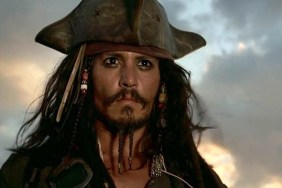
I have decided to call this new feature “Cinematic Revival” as I try to improve my cinematic awareness and catch up on several films I missed over the years, or in this case just never saw. I wasn’t alive in 1954 when Akira Kurosawa’s Seven Samurai or Shichinin no samurai was initially released and still not born when it hit the States on November 19, 1956, but that can’t stop us from taking in the past.

First off, the version I watched was the latest Criterion Collection edition, which has a running time of 207 minutes. Over the years, as IMDb mentions, this film has seen several cuts ranging from the original 207 minute version released in Japan to the 141 minute cut released in the US. The film is 100% black-and-white, subtitled and featured in a 1.37:1 full screen aspect ratio. If any of these things bother you then you might want to consider clicking on one of the superhero stories we recently posted, if not I am glad you are sticking with me.

The plot line of this 3 hour and 27 minute epic is quite simple. A group of villagers are consistently being raided by a group of 30-40 bandits. In an effort to combat against the raiders they hire seven samurai to protect their village and kill the bandits. The samurai are only paid in three square meals a day and their only reward will be the knowledge that they helped these people.
Surfing through the comments at IMDb you can see that the people that hated this film found it boring and refer to the acting as “terrible”. The people that loved it seem to be film aficionados that realize the film is the first of its kind in many aspects; they focus on the creation of the plotline and are patient in watching it flesh itself out. Many people can be duped into seeing a film of this nature based on its impressive title, the idea that we are getting a samurai story and that it comes in at #11 on IMDb’s Top 250 can be quite appealing. This would tell most that it is going to be an action packed bloody good time, and a classic to boot. Everyone wants to love a classic and use it in conversation to make themselves feel well rounded when it comes to their choices in movies. Unfortunately for them Seven Samurai is a story first and an action flick a well distanced second.
In the opening segments we are reminded of just how crappy the life of a farmer really is. They hold themselves in low regard and are looked at as easy targets. It is only when they realize they face near complete annihilation that this one group of farmers decides to do something about it. We meet several of the villagers, but four of them standout more than the rest. These four are Yohei, Manzo, Shino (Manzo’s daughter) and of course Gisaku or Grandad. Mosuke and Rikichi are also well established, but the other four, along with the seven samurai, are more crucial in guiding the story.
Yohei is an excellent go between for the samurai to learn and interact amongst the villagers while Manzo guides the story towards paranoia over his fear that his daughter Shino will soon be wooed by one of the samurai. This fear comes from a long history of fear toward samurai and bandits alike, something the plays well into my favorite character of the picture, Kikuchiyo played by Toshirô Mifune (that’s him just below).

Of the seven samurai Kikuchiyo is the one that actually fights to be part of the group even though he is rejected at first. He initially shows up drunk upon the assembly of six samurai and lies about his heritage. Denied participation he follows the group back to the village in one of the better scenes of the film (pictured above) as he falsely bangs on the village alarm, scaring the villagers from their hiding places as they did not immediately come out to welcome the seven saviors. The best way to describe Kikuchiyo is to say he is unrestrained in each and every way. There are moments that he puts the group in danger, but it isn’t the type of character that we typically see in films that messes up, pouts and runs away only to learn his lesson and come back and save the day. Kikuchiyo is a real character, as are all of the characters we meet in Seven Samurai. They aren’t glorified in any way other than to be looked upon glowingly by the thankful villagers.
On a quick side note, I actually think the best scene of the film involves Kikuchiyo when he indirectly reveals who he really is and his past. He gives a speech of such anger and resentment it really is quite fantastic.

Takashi Shimura (pictured above) turns in a good performance as the samurai leader Kambei Shimada, but his performance is overlooked (as it really should be), by the more interesting characters of the group. Kikuchiyo aside I really enjoyed the character of Gorobei Katayama, he added a sense of calm to the high strung group with humor and plain good hearted behavior. The story of young Katsushiro is the one other real piece of the plot that runs throughout the film as he is the youngest of the samurai and we see a sort of “coming of age” story in his character, a story that quickly becomes entwined with Mazo and his daughter Shino. As a relative newcomer to the genre I saw a lot of the film through his eyes, and I think many people will feel the same way after watching and looking back upon it all.
If you couldn’t tell already, this is a character driven story, the action, as I said, plays a very distant second, as it should. The reason this film is over three hours long is due to the introduction of so many characters and the reason people like it is due to these characters and the fact that they are so colorful and well developed. Each of the samurai has a story and each comes from a different background, enough so that you can actually look at the battle seven different ways, and at different times in the film you actually do.
Seven Samurai‘s major claim to fame is how it has influenced so many different films in many different ways. It was the basis for the 1960 western The Magnificent Seven and can pretty much be referenced any time you see a movie that needs to gather a group of individuals to fight an invading marauder or even those shots of the massive mob coming over the hills. On top of that many people reference Kurosawa’s directing style, his use of slow motion and his ability to capture a scene from angles many directors wouldn’t typically try.

The one piece of Kurosawa’s directing style that stood out in my eyes certainly was his use of slow motion. I don’t mention this as some pompous ass just searching for something to make me sound like I know more than others do, when actually I know far less. However, I think the one reason people dislike this movie, and point at its action as their reason, are upset that it isn’t as graphic as the films we see now. This isn’t Kill Bill folks. There is no blood, no beheadings and most of the deaths are assumed rather than graphically realized. If you give this movie a chance you will realize those things aren’t necessary. The primary example that impressed me early in the film involved the introduction of the samurai Kyuzo.
Kyuzo is challenged to fight by another samurai, a samurai with less talent who ultimately falls under Kyuzo’s blade. The picture above is a screen capture of the final strike and it is the final moment in the scene before Kurosawa goes to slow motion. As I said, there is no blood spurting, instead the loser slowly falls to the ground, a move that might have looked silly in regular speed, but slowed down, the death is given a weight it otherwise wouldn’t have had. You can check out the full scene just below and a second example of Kurosawa’s slow motion use here.
To those that call Seven Samurai boring, there isn’t really much to say other than this isn’t a film for people that don’t enjoy dialogue driven features. Yeah, they might be samurai, and they might be preparing to fight a “bloody” battle, but the action only comes in the third act of a 3 hour and 27 minute film, which means there are over two hours of prep time and character building. However, it is these early moments that give the final battles what they need to be dramatic and tense.
There is talk of remaking Seven Samurai, but this is a move that I cannot see working, especially for those that love the original. In order to pander to today’s movie audiences everything I have said that is great about the film would have to be discarded to turn this into a more modern and bloody affair. The only thing I actually wish about the movie would be if it was in color just so the environments the film was shot in would be even more magnificent. For anyone that has seen any films shot on such exquisite countryside as seen in Seven Samurai know just how much they bring a film to life, adding richness you can only get from such settings.

While I am still not sure I would rank Seven Samurai as high as IMDb’s users have, it is certainly worth watching as a significant piece of movie history. There are far more things to discuss about the film that I am leaving out, Roger Ebert gives it a lot of thought here and you can find it being discussed all over when you do a Google search.
Should you be inclined to check it out, you can buy it here. If anything I have talked about has caught your attention you should enjoy what you see.
Now I leave you with one of the most telling pics of the film, although I had to put a spoiler cover over it so I don’t ruin the story for anyone that will hopefully check this film out. Just below that is the trailer for the Criterion Collection edition. Next week I am taking a look at Citizen Kane (yup, I have never seen it). So if you wanted to rent it and join the discussion next week please do so.
Also, there is going to be a complete “Cinematic Revival” section with comments in the future, so any comments left for any of the “Cinematic Revival” articles will be transferred to that section once it is live. Hope many of you will join in.











